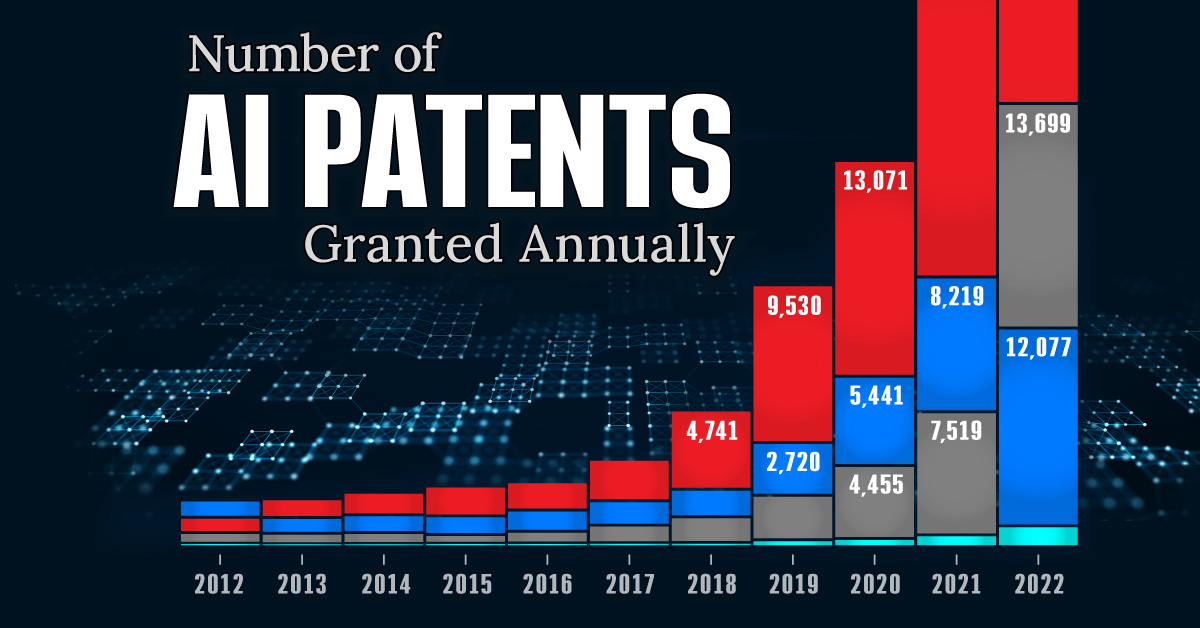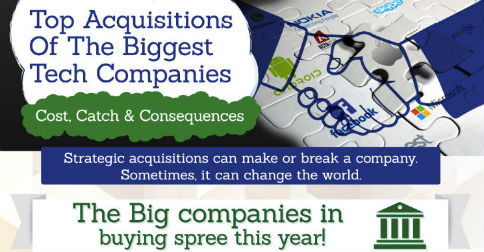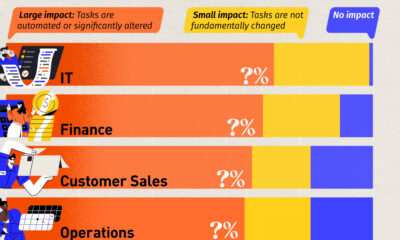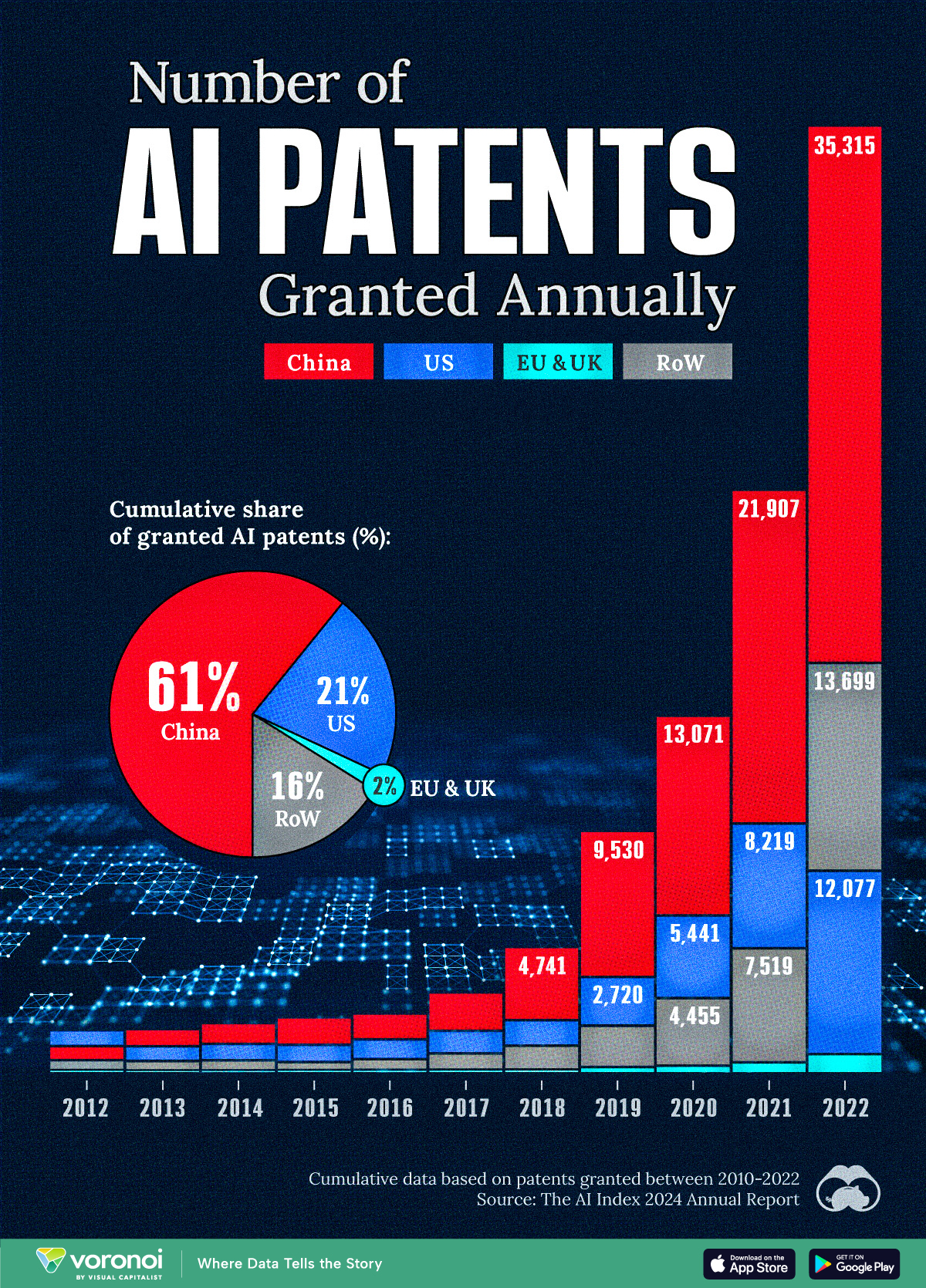Technology
When Tech Giants Go Shopping
When Tech Giants Go Shopping
So far, 2014 has been a big year for the tech industry in regards to acquisitions. But if you think that Facebook’s $19 billion purchase of WhatsApp was the largest, you’d be mistaken.
Acquisitions are a huge part of driving the tech industry forward. They bring in new ideas, fresh talent, proprietary technologies, and much more. For investors, an acquisition can mean big money, on both ends of a buyout. Take for example Comcast’s bid for taking over Time Warner Cable earlier this year, investors in Time Warner enjoyed a 6.8% jump in their stock value. These types of deals aren’t rare; just last year, there were 2,710 mergers and acquisitions in the tech industry.
The Big 4 of the tech world (Apple, Facebook, Microsoft and Google) all have made very important acquisitions, and some may even change the world. Take for example Google’s buyout of YouTube back in 2006. The video streaming site was purchased for $1.6 billion in stock. YouTube has come a long way from being famous for its entertaining gag videos like “Charlie Bit My Finger.” The platform has become a worldwide visual communication tool. It even played a role in liberating parts of the Arab world in the Arab Spring. Today, YouTube is estimated to be valued at $15 billion.
Perhaps the next big game changing acquisition will be one that wasn’t mentioned in the infographic: Apple’s purchase of Beats Electronics. Apple acquired Beats for a reported $3 billion. Some speculate it wasn’t to offer superior headphones to Apple’s clientele; rather, it was for Beats’ streaming service. There may be a shift in how modern music listeners enjoys their music. Apple’s iTunes’ sales have been slowly dwindling as of late, album sales are down 15% this year. The future may lie in subscription based streaming services, something Beats has a head start in.
We’re only half way through 2014 and we have already seen major players shake up the tech industry through mergers and acquisitions. I am sure that I’m not alone when I say I’m excited to see what’s in store for the remainder of the year.
Original infographic from: FinancesOnline.com
Technology
Visualizing AI Patents by Country
See which countries have been granted the most AI patents each year, from 2012 to 2022.

Visualizing AI Patents by Country
This was originally posted on our Voronoi app. Download the app for free on iOS or Android and discover incredible data-driven charts from a variety of trusted sources.
This infographic shows the number of AI-related patents granted each year from 2010 to 2022 (latest data available). These figures come from the Center for Security and Emerging Technology (CSET), accessed via Stanford University’s 2024 AI Index Report.
From this data, we can see that China first overtook the U.S. in 2013. Since then, the country has seen enormous growth in the number of AI patents granted each year.
| Year | China | EU and UK | U.S. | RoW | Global Total |
|---|---|---|---|---|---|
| 2010 | 307 | 137 | 984 | 571 | 1,999 |
| 2011 | 516 | 129 | 980 | 581 | 2,206 |
| 2012 | 926 | 112 | 950 | 660 | 2,648 |
| 2013 | 1,035 | 91 | 970 | 627 | 2,723 |
| 2014 | 1,278 | 97 | 1,078 | 667 | 3,120 |
| 2015 | 1,721 | 110 | 1,135 | 539 | 3,505 |
| 2016 | 1,621 | 128 | 1,298 | 714 | 3,761 |
| 2017 | 2,428 | 144 | 1,489 | 1,075 | 5,136 |
| 2018 | 4,741 | 155 | 1,674 | 1,574 | 8,144 |
| 2019 | 9,530 | 322 | 3,211 | 2,720 | 15,783 |
| 2020 | 13,071 | 406 | 5,441 | 4,455 | 23,373 |
| 2021 | 21,907 | 623 | 8,219 | 7,519 | 38,268 |
| 2022 | 35,315 | 1,173 | 12,077 | 13,699 | 62,264 |
In 2022, China was granted more patents than every other country combined.
While this suggests that the country is very active in researching the field of artificial intelligence, it doesn’t necessarily mean that China is the farthest in terms of capability.
Key Facts About AI Patents
According to CSET, AI patents relate to mathematical relationships and algorithms, which are considered abstract ideas under patent law. They can also have different meaning, depending on where they are filed.
In the U.S., AI patenting is concentrated amongst large companies including IBM, Microsoft, and Google. On the other hand, AI patenting in China is more distributed across government organizations, universities, and tech firms (e.g. Tencent).
In terms of focus area, China’s patents are typically related to computer vision, a field of AI that enables computers and systems to interpret visual data and inputs. Meanwhile America’s efforts are more evenly distributed across research fields.
Learn More About AI From Visual Capitalist
If you want to see more data visualizations on artificial intelligence, check out this graphic that shows which job departments will be impacted by AI the most.
-

 Markets1 week ago
Markets1 week agoU.S. Debt Interest Payments Reach $1 Trillion
-

 Markets2 weeks ago
Markets2 weeks agoRanked: The Most Valuable Housing Markets in America
-

 Money2 weeks ago
Money2 weeks agoWhich States Have the Highest Minimum Wage in America?
-

 AI2 weeks ago
AI2 weeks agoRanked: Semiconductor Companies by Industry Revenue Share
-

 Markets2 weeks ago
Markets2 weeks agoRanked: The World’s Top Flight Routes, by Revenue
-

 Countries2 weeks ago
Countries2 weeks agoPopulation Projections: The World’s 6 Largest Countries in 2075
-

 Markets2 weeks ago
Markets2 weeks agoThe Top 10 States by Real GDP Growth in 2023
-

 Money2 weeks ago
Money2 weeks agoThe Smallest Gender Wage Gaps in OECD Countries
















